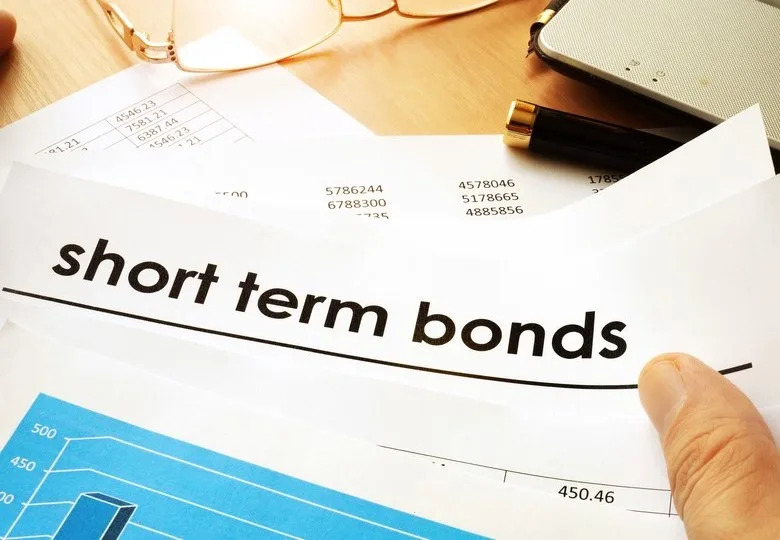
Investors were surprised by first quarter Gross Domestic Product (GDP) growth coming in slower than expected. Meanwhile, inflation remains sticky, and the first rate cut from the Federal Reserve isn't expected until September.
In an uncertain and inflationary environment, the combination of high credit quality and low interest-rate sensitivity make short-term Treasury ETFs one of most popular securities on the market today.
Learn about the different types of Treasury ETFs on the short end of the yield curve and see yields and other key data on the largest Treasury ETFs in the short-term space.
What Is a Short-Term Treasury ETF?
A short-term Treasury ETF is an exchange-traded fund that tracks a basket of short-term Treasury securities, such as Treasury bills and notes. In the U.S., these debt instruments are issued by the Department of the Treasury to raise funds for government operations. They are considered one of the safest investments because they are backed by the full faith and credit of the U.S. government.
Short-term Treasury ETFs specifically focus on Treasuries with shorter durations, which means these securities typically have maturities ranging from a few months to a few years. The objective of these ETFs is to provide investors with a low-risk, liquid and income-generating investment option. They are often used by investors who want to park their money in a safe and relatively liquid asset class for a short period while earning yields above typical money market accounts.
What Are the Different Types of Short-Term Treasury ETFs?
Short-term Treasury ETFs come in various forms, each catering to specific investment objectives or preferences. The main types include:
The 5 Top Short-Term Treasury ETFs by AUM
|
Ticker |
Fund |
AUM |
Expense Ratio |
Yield |
|
BIL |
SPDR Bloomberg 1-3 Month T-Bill ETF |
$32.7B |
0.14% |
5.19% |
|
SHY |
iShares 1-3 Year Treasury Bond ETF |
$24.6B |
0.15% |
4.77% |
|
SGOV |
iShares 0-3 Month Treasury Bond ETF |
$20.2B |
0.07% |
5.28% |
|
VGSH |
Vanguard Short-Term Treasury Index Fund |
$19.3B |
0.04% |
4.89% |
|
SHV |
iShares Short Treasury Bond ETF |
$18.7B |
0.04% |
5.11% |
Data as of April 25, 2024.
Are Short-Term Treasury ETFs Safe?
Short-term Treasury ETFs are generally considered to be relatively safe investments when compared to many other types of investments. The primary reason is that they primarily invest in U.S. Treasury securities, which are considered one of the safest investments in the world. They are backed by the full faith and credit of the U.S. government, which means there is low credit risk associated with these securities.
Furthermore, they focus on Treasury securities with shorter maturities, typically ranging from a few months to a few years. Shorter maturities mean that these ETFs are less exposed to interest rate risk compared to longer-term bonds.
However, it’s important to note that while short-term Treasury ETFs are considered safe, they generally don’t produce high returns over time, especially in a low-interest-rate environment. Investors looking for higher potential returns may need to consider other investment options, but those options typically come with higher risk.
Vanguard's Short-Term Treasury ETF
The Vanguard Short-Term Treasury Index Fund (VGSH) is the fourth largest short-term Treasury ETF on the market, but it’s the most popular short-term Treasury ETF among retail investors. Do-it-yourselfers trust the Vanguard name and believe in low-cost, passively managed funds. Furthermore, the ultra-low expense ratio of 0.04% is an important factor for yield-conscious investors.
VGSH tracks the Bloomberg US Treasury 1-3 Year Index, which covers a broad range of the short-term U.S. Treasury debt market, excluding inflation-protected bonds. VGSH’s primary objective is to provide current income with modest price fluctuation.
Federal Interest Rates and Short-Term Treasury ETFs
The Federal Reserve's monetary policy and inflation have had a significant impact on short-term Treasury ETFs in recent years. The Federal Reserve raised interest rates aggressively in 2022 and 2023 in an effort to combat high inflation. This has caused the yields on short-term Treasury bonds to rise, which has in turn led to a decline in the prices of short-term Treasury ETFs.
For example, short-term Treasury bonds yielded 0.04% in June of 2021 and reached an all-time high of 5.49% in October 2023. During the same period short-term Treasury ETFs declined by roughly 7% in price. This compares to long-term Treasury ETFs that declined by more than 50% in price. Bond prices move in the opposite direction as interest rates and short-duration bonds are less interest-rate sensitive than long-term bonds.
In 2024, short-term Treasury ETFs have maintained yields near or above 5% while remaining relatively stable in price, especially on the shorter end of the curve. For example, SPDR Bloomberg 1-3 Month Treasury Bond ETF (BIL) is yielding over 5% and has managed a 0.4% price increase for the year.
Bottom Line on Short-Term Treasury ETFs
Investors may use short-term Treasury ETFs for various purposes, such as preserving capital, earning a small amount of interest income, or positioning their portfolios defensively during periods of market volatility. It’s important to remember that no investment is entirely risk-free. Short-term Treasury ETFs can still be subject to market risk, interest rate risk and inflation risk, even though these risks are relatively low.
Permalink | © Copyright 2024 etf.com. All rights reserved

